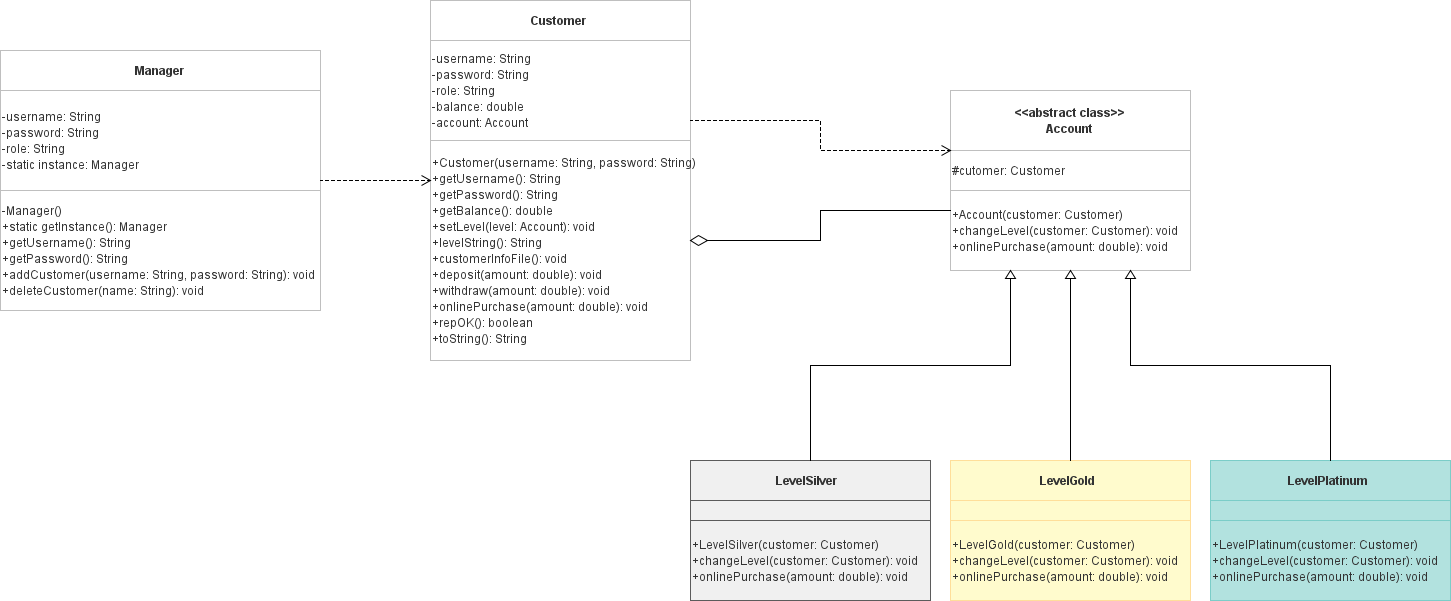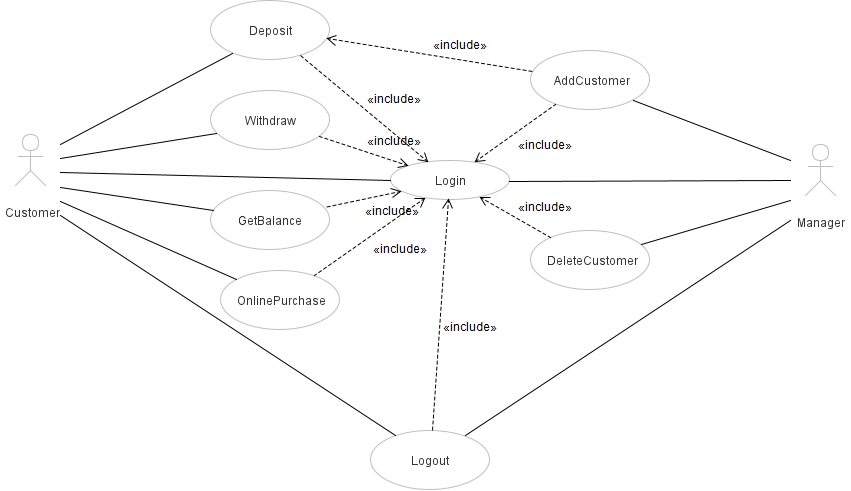The class diagram describes the banking system. The banking system has a manager and either
zero or more customers. A customer has an account that can be of three levels: silver, gold, and
platinum. Hence, there is a Manager, Customer, Account, LevelSilver, LevelGold, and
LevelPlatinum class. The Manager class follows a singleton pattern as there can only be one
manager instance. It has a private constructor and a public static method. When a manager adds a
new customer using the addCustomer method, two other methods from the Customer class are
class. So, the Manager class depends on the Customer class. The Customer class contains an
instance variable account and the method setLevel which uses a type Account, so there is an
aggregation relationship between the two classes. The methods deposit, withdraw, and
onlinePurchase use methods from the Account class so there is a dependency relationship.
Within the Customer class, there is an Overview clause, abstraction function, rep invariant, and
necessary clauses for each method. The abstract function is implemented in the toString method
and rep invariant is implemented in the repOK method. The classes Account, LevelSilver,
LevelGold, and LevelPlatinum form the State design pattern. The Account class is an abstract
class which the concrete state classes LevelSilver, LevelGold, and LevelPlatinum inherit from.
The concrete state classes override the method changeLevel which is responsible for changing
the state(level) of the account within the Customer class. They override the method
onlinePurchase which has different functions based on the current state of the customer's
account.


